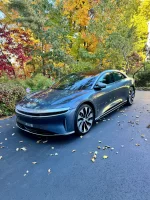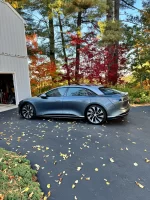This is somewhat advanced if you're brand new to the car, but...
Learn the nav screen inside and out. Learn how the 'search' and 'manage trips' works. Learn how to handle multi-stop routes, and how to manipulate the order of the stops (drag and drop on the manage trips screen). If you're on a long trip, the 'manage trips' screen will show the estimated charge remaining at the destination. This is very handy while you're charging to determine if the current SoC will leave you with a sufficient buffer at the destination. If you will have access to chargers at your destination, then it lets you stop your current session sooner and get on the road, understanding that the rate of charge decreases as your SoC increases, which means those 'useless' extra miles that you added cost you more time than was necessary.
If you don't plan on charging at your destination, then as you're charging at your current location, identify which charger you're going to use on the way BACK, set THAT as destination and your previous destination as an interim stop so that you can charge enough to make the trip, and the return to the intended charger.
The extent to which you have a solid plan will minimizes the surprises and stress.
I've found the 'range at destination' number on my dash is really quite accurate. I think it remained within 20-30 miles on what was at 800 mile trip, then it was pretty much bang on the money for a 350 mile roundtrip a few days later. It was neat waking up the next day and seeing the range increased by 30-40 miles simply because of the temperature.
Last tip, the further the 'power needle' is from center, the more losses you endure. In other words, larger power draws have a non-linear increase in cost for a linear increase in power. That means that if you mash the throttle at every single light to get up to speed (ie, more time spent with a large needle deflection), you will hurt your range. As long as you're not range-constrained, that's absolutely fine....but if you are conducting a trip where efficiency is important, just remember that wind resistance gets quite nasty the faster you get. Much above 75 mph, your efficiency will suffer, there's no getting around it.
Get to know the car at different speeds. Start out with way more range than you need for a trip, then start driving less and less efficiently to see what effects they have (AC vs massage, vs seat heat/cooling, etc). Incline, speed through the air (ie, the speed that's being read out, accounting for headwind or tailwind) and temperature are the big drivers. That, and tire pressure comes into it a surprising amount as well. Make sure you're not below the factory numbers. Some people run above factory numbers (but below the tire max limit, obviously) for long road trips, sacrificing ride quality and handling for increased efficiency.
If you made it this far, congrats!
You have a BEAST of a road tripping car...enjoy it!


